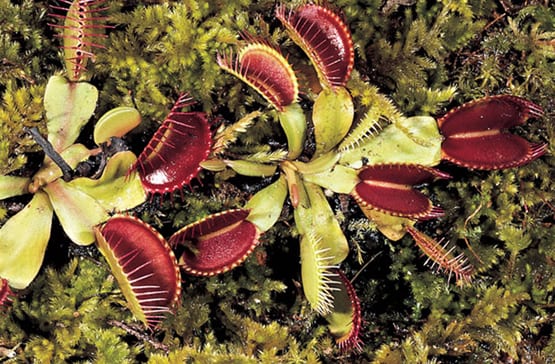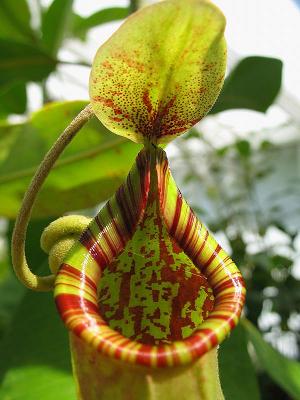Carnivorous plants, as we have already seen they feed not only on insects but some other small animals like frogs, scorpions and minnows. To catch these types of animals, plants have some mechanisms or traps on the table:
- Traps: It is the trap used by the best known carnivorous plant, the Venus flytrap or Dionaea muscipula. When the small animal or insect lands on the leaf and touches its bristles, the plant closes immediately. The animal cannot escape since the edges have thorns that prevent it from escaping. In the same way, while the prey moves and tries to escape, it is stimulating the secretion of digestive juices for its disintegration, which can also last several days.
- Sticky hairs: The Drosera or Drosophyllum, has leaves that secrete a viscous and sticky liquid with an aroma very similar to honey. The insects land on the leaves and get caught in the sticky hairs. Immediately afterwards, the tentacles of this plant begin to curve inwards until they close. However, the plant recognizes the food that serves it and the one that does not, so if we put a grain of sand on it, its leaves will not close.
- Cucuruchos: The Sarracenia or Heliamphora has a receptacle where insects fall. However when they want to go out they cannot do it due to some inverted hairs. In their eagerness to escape, the animals get tired and end up falling to the bottom of the trap and drowning in the digestive liquid.
- Urns with a lid: Urns with a lid can be found in the carnivorous species of Nepenthes or Cephalotus. The prey that falls there, slide down the walls and reach a bottom of viscous liquid and drown. Later enzymes and bacteria dissolve them.
- Suction bladders: This suction bladder system is possessed by aquatic carnivorous plants or Ultricularias. The bladders are under water. When an animal, such as fish, touches the bristles that compose it, the bladder dilates and sucks the animal.

